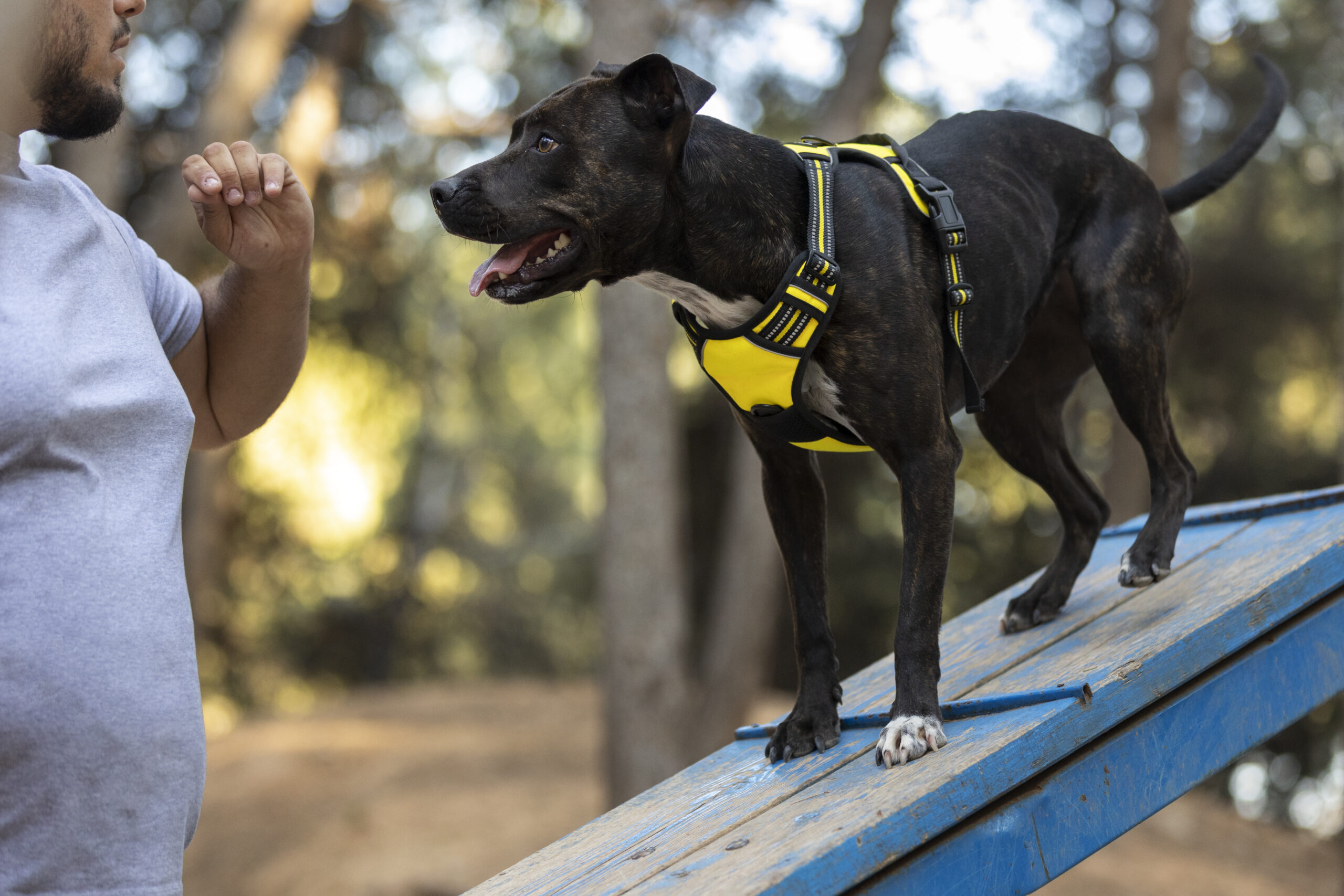
Patience, Praise and Repetition
Spring is upon us, and if you checked in at the beginning of the year, you and your dog might have been having fun learning new tricks and working on patience. If you find yourself here for the first time, you can look back at the January post, “New Year, ‘New Dog.” This time, we will expand on a few methods of praise, patience, and rewards. On top of enrichment and training, these additional methods will help improve your dog’s behavior, temperament, and ability to train in the future.
Praise goes a long way. Recognizing a job well done will make your dog’s (or anyone’s) day. They put on a big smile, their tail wags a mile a minute, and you can tell they are happy with what they’re hearing from you. Good, keep this up. Now, is this a new achievement or trick? If so, a higher-reward treat should be given. A higher-reward treat could be anything elevated from what’s inside your dog’s day to day treat jar. This can include beef jerky, pieces of string cheese, frozen green beans, or cut up hot dogs. As always, please consult your vet about any treats you plan to give your dog. These higher-reward treats will have your dog in statue mode when they sit. They know what they are about to get. But, these should not be used every time–only during training sessions, enrichment games, or any other moment you decide is high reward.
Patience, as always, is key when training a dog or playing enrichment games. Sometimes, they will not get it right away or get too excited. Simply redirect their attention to the task and refrain from using the dog’s name when saying ‘no.’ Associating the dog’s name with ‘no’ could lead to your dog getting nervous whenever their name is called. Best not to take any chances. Now, if your dog completes the task, say their name as many times as you want with a ‘good job’ and some chest rubs. Then, referring back to the previous paragraph, reward with a treat based on the task completed. Rinse and repeat. Eventually, chest rubs and verbal praise will be enough for your dog to feel accomplished and rewarded. But don’t totally cut out the treats. They will still deserve those.
Repetition, repetition, repetition. Building habits and skills takes practice. Using what was laid out in the previous paragraphs, you are now prepared to train and reward your dog. You can continue to reward good behavior on walks, around the house, and even if you take your dog to a pet-friendly patio. All are fair game. Playing enrichment games (discussed in January’s article) still helps, but changing up the environment will ensure your dog is ready for anything and they know how to behave.
Training your dog and rewarding them should be fun. Not only do these tasks benefit their behavior, they help you grow as an owner, too. These sessions are meant to be enriching for both you and your dog. With the proper rewarding, praise, and repetition, the relationship between you and your dog will continue to grow. The stronger the bond, the better your dog will listen. We all know the feeling of hearing we’ve done a good job. This is no different for your dog, so shout it from the rooftops and let them know.
Did we miss anything? Should something be expanded on? Do you have a high reward treat suggestion? Let us know in the comments!
